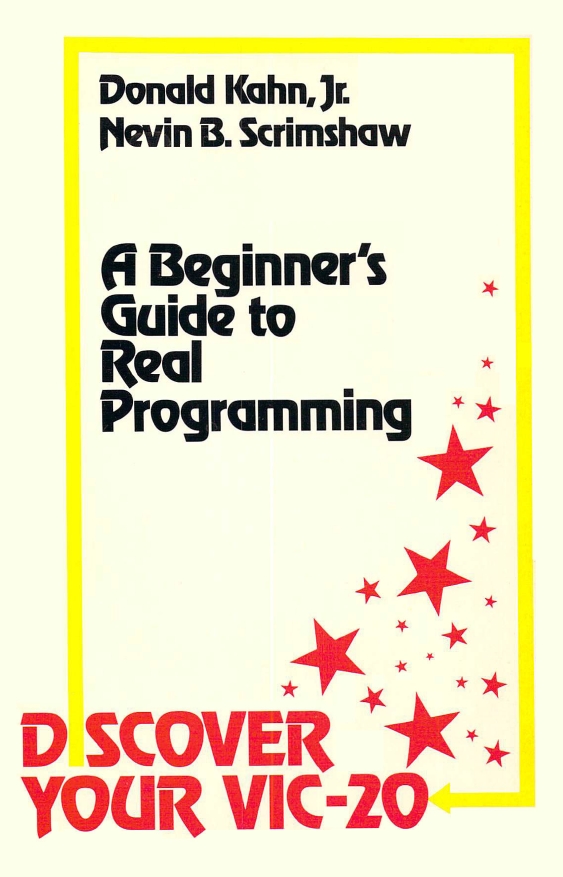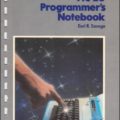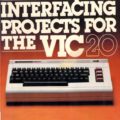Computers are becoming a way of life. There isn’t a facet of modem everyday living that is not affected in some way by a computer. We may as well join the system. A home computer, such as the VIC-20, can be a very useful convenience to have. It can help entertain and educate your children. It can allow you to solve
difficult equations with the push of a key. It can also help you keep track of all your daily tasks and expenses. Of course, a computer can’t do all of these things without the specific software for the job.
The purpose of this book is to provide you with a wide range of software to help you get the maximum use out of your computer. All of the programs are ready to type in and run. The instructional chapters are presented in a straightforward manner. They are not technical and do not provide you with a lot of extraneous data that you would probably never have a use for. If you want to learn the hexadecimal system, the data bus specifications, or how many bytes it takes to input your name, you will have to look elsewhere. The programs here are presented to simplify using your computer, not to complicate it. The book is divided into six chapters. On the following page are a few notes about each.
Chapter 1 covers math ideas and problems that would be encountered in grade school through high school. A number of the programs should be helpful around the house as well as being useful for class work.
Chapter 2 is composed of a variety of programs designed to help ease your daily workload. The programs include ones to balance your checkbook, calculate a loan payment, and assign weekly household tasks. There’s also a complete Household Weights and Measures conversion program so you can quickly check how many teaspoons are in a cup, or how many cups are in a quart.
Chapter 3 is an instructional chapter designed to teach how to set up your own graphics in order to enhance your programs. The VIC-20’s graphic capabilities are fun to play around with, as well as useful in certain programs. The chapter takes a “hand on” approach, with 24 demonstration programs included to help clarify each idea covered.
Chapter 4 contains sixteen game programs, each one ready to type in. A number of the games are semieducational, while others are just for fun. All of the games have color. Some have nifty graphics, and others have sound effects. A few of the programs were just too long to be made any fancier.
Chapter 5 is about making music with your computer. It has two parts. The first part consists of six programs for specific music scores. Just type them in, and run them, and listen. The second part has stepby -step instructions for programming any other musical score. Programming music for the computer may
seem like just a fun way to use your computer, but it is also a very good way to learn the basic structure of musical composition.
Chapter 5 also includes a section on adding music to other programs. You may find it relaxing to have a favorite piece playas a prelude to balancing your checkbook.
Chapter 6 is devoted exclusively to a system, devised for the VIC-20, for putting your recipes onto computer tapes. This will eliminate all those disorganized, space consuming cookbooks lying around the kitchen.
I must tell you that setting up a recipe system for your computer will take a lot of preliminary organizing and planning. It will also take an awful lot of typing, but when you are finished you will have something to be really proud of and you will have a system that will serve you indefinitely.
All of the programs in this book have been programmed to look as good as possible in addition to functioning properly. This means that you will see a lot of blank spaces, usually in the PRINT statements.
There are also places where there is no space between words in the programming. It is necessary for you to put the programs in as they are. Don’t close up the empty spacing, or else the program will not print out nicely.
Sample runs have been included for Chapters 1 and 2. The way these are displayed are not necessarily the way they will look on your screen, but they come close.
Most of the programs have been “scrunched” which means that they contain more than one statement per line number. Because the VIC-20’s memory is only 3.5K, line crunching was absolutely necessary.
Some statements or commands you can’t crunch all the time, particularly GOSUBs and GOTOs.
Outside of those don’t be afraid to crunch lines in your programs. Once you’ve typed in and run the program to be sure it’s working properly, save it right away. It’s very depressing (to say the least) to have an hour or more of work lost because the computer or TV is accidently shut off or because there is a split second power outage. So save periodically to avoid losing your work.
All of the programs in the book have been designed for the unexpanded VIC-20. However, they can easily be put into other computers if the required basic changes are made to accommodate another type of BASIC. I hope you find these programs helpful, and get long use and enjoyment out of them.








